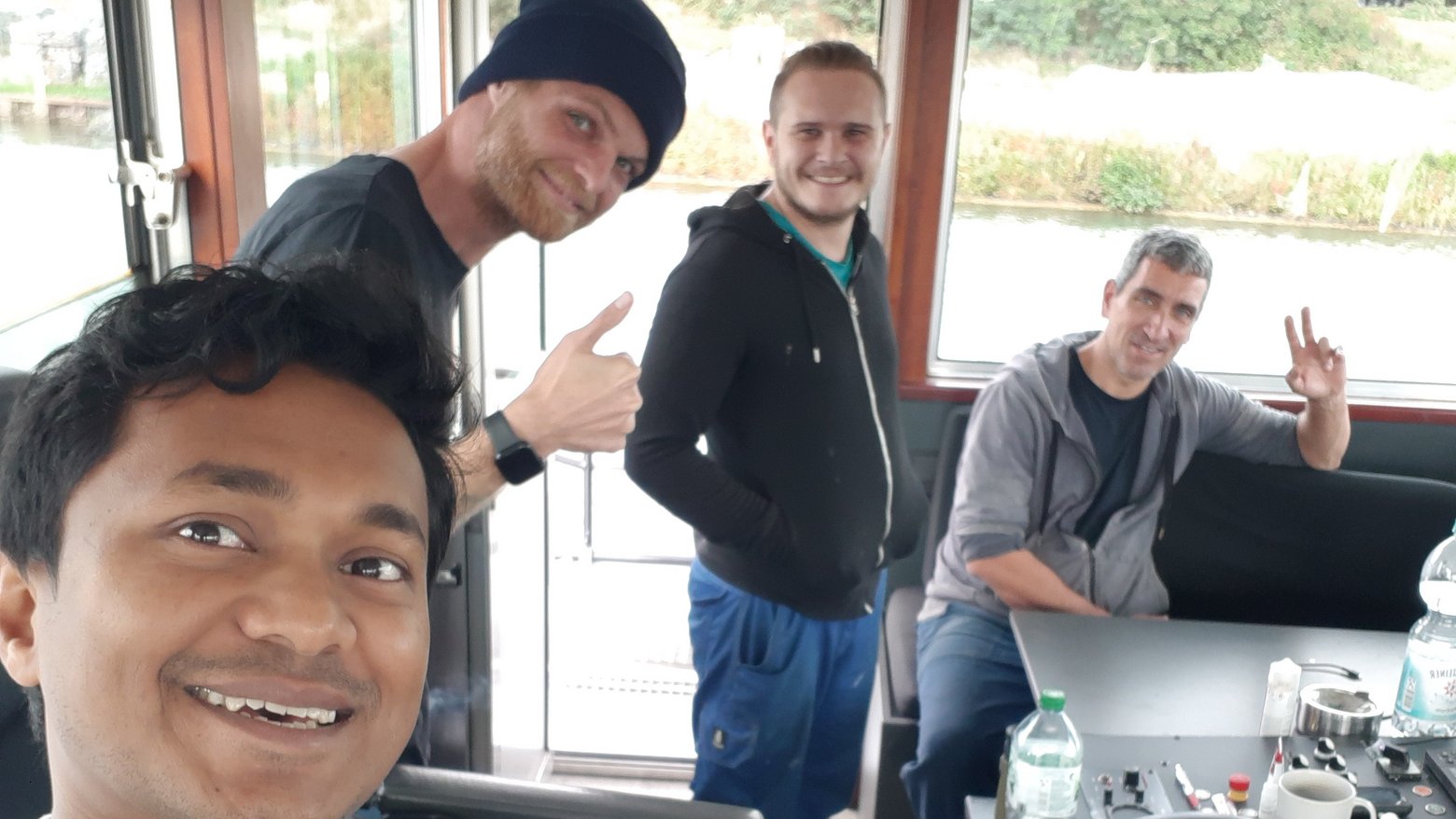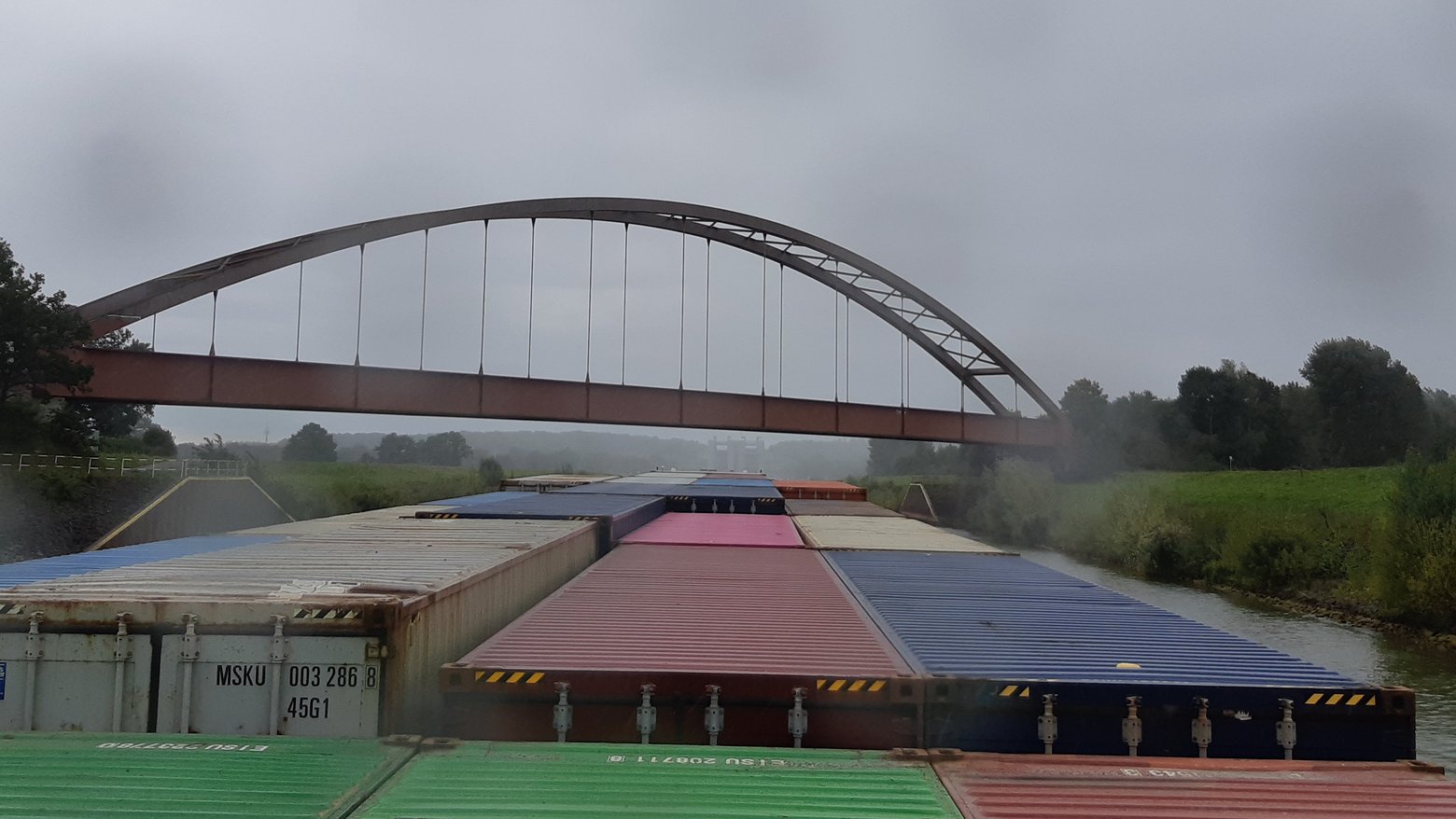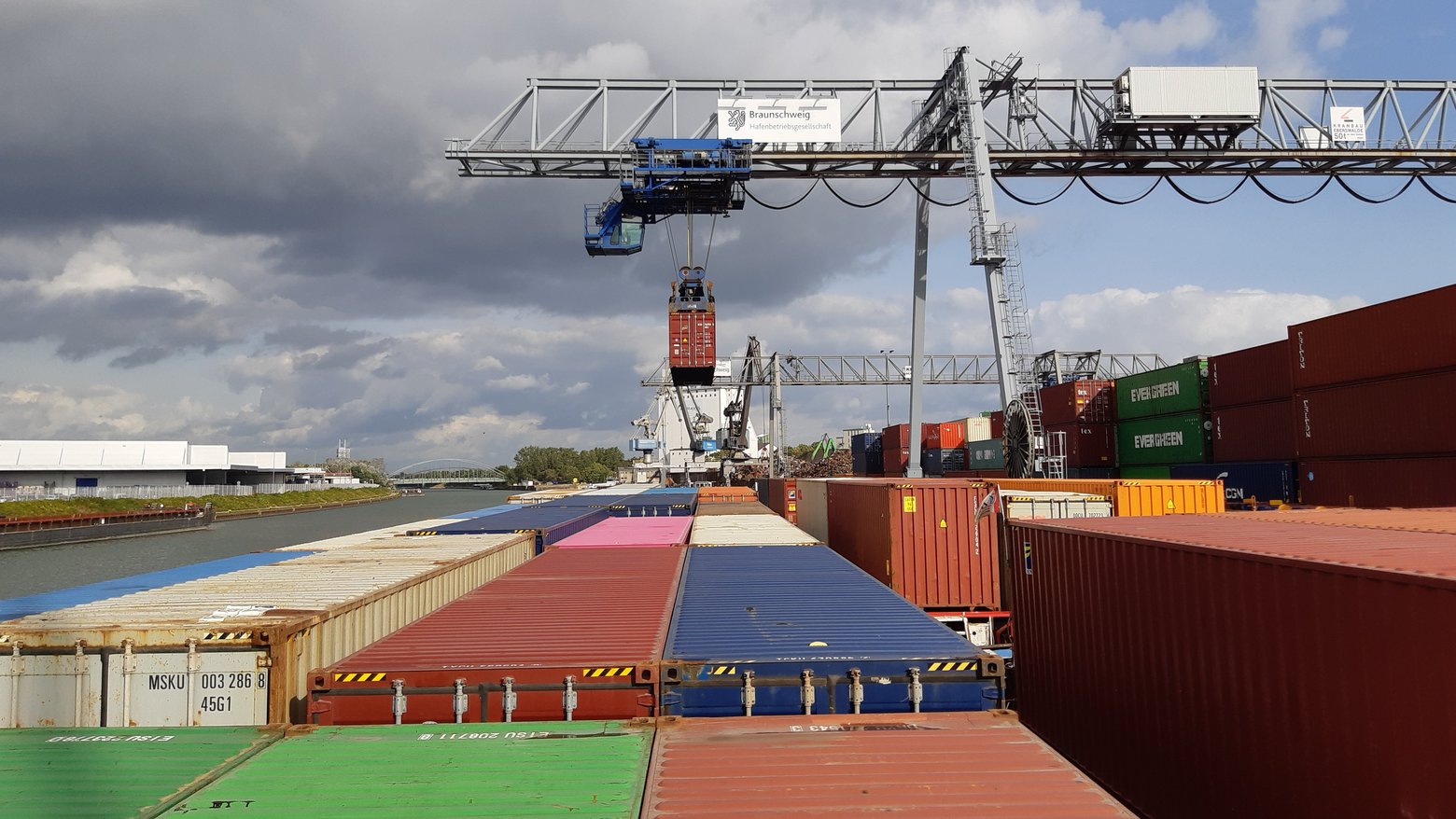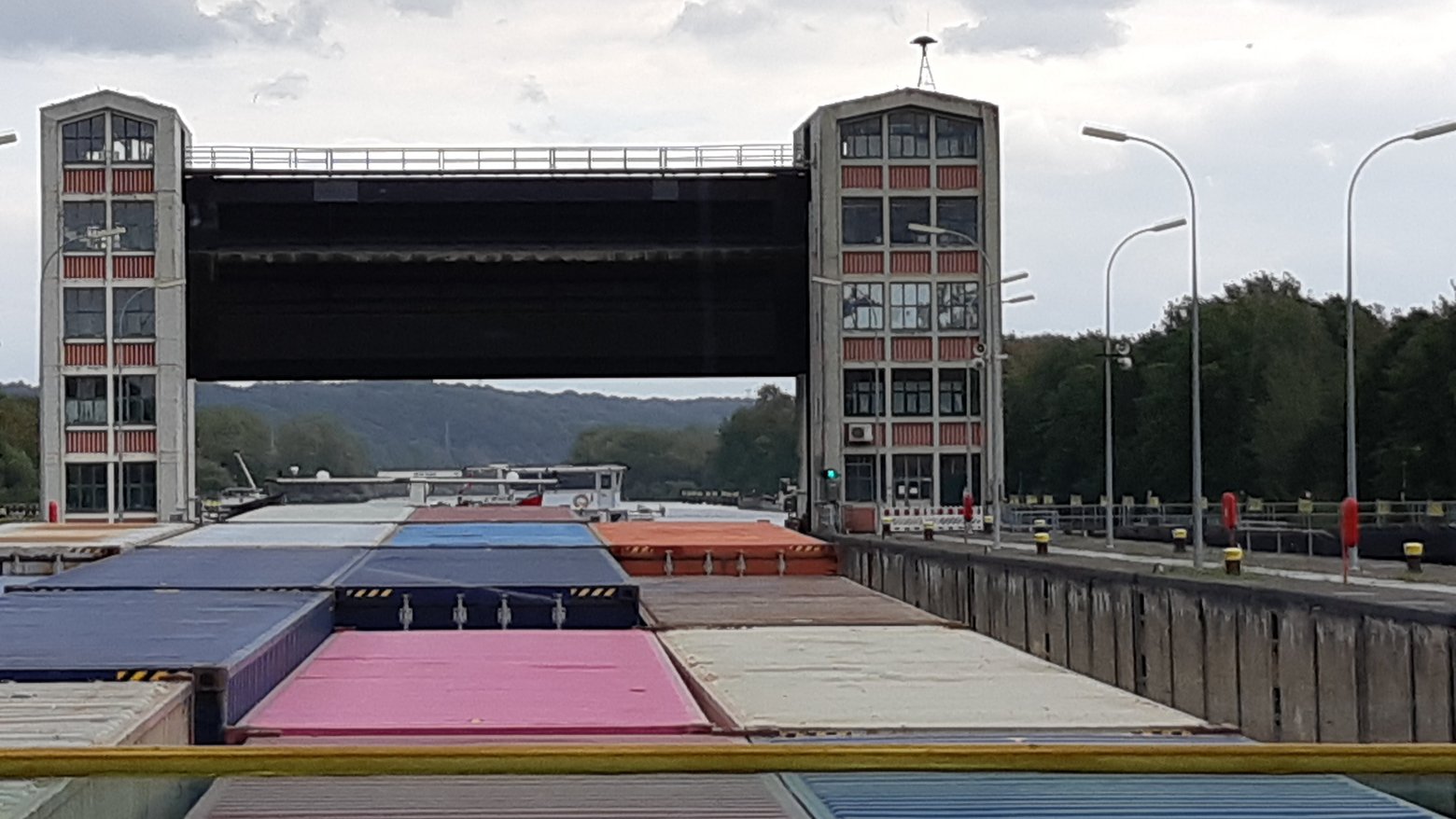LIHH guest researcher from the EU project AUTOBarge lately travelled on board of an inland vessel to gather insights for the future of inland shipping research
This LIHH blog post is about a truly transnational cooperation, so today we are in English for once. The LIHH is a partner in the European AUTOBarge project, in which a total of 15 doctoral students from 10 scientific institutions and universities from all over Europe are jointly researching the future of inland shipping with regard to automation and autonomous sailing. Two of these researchers are currently visiting the LIHH office for three months as guest researchers in order to gain first-hand input and insights from the logistics industry and, in addition, to establish good expert contacts for further research questions.
One of them, Rana Saha, from the Chalmers University of Technology in Gothenburg (Sweden), had the opportunity to inspect life and processes on board at first hand for a few days thanks to our member company Deutsche Binnenreederei (many thanks!). Rana Saha has written a short report on the trip:
Life onboard in an inland barge: How can automation and digitalization change the scenarios?
It was exciting for me to go back to the water (not the sea this time) after several years in a different role. I was a researcher onboard the inland motor vessel CATALEYA for 3 days during its regular trip on the Hamburg- Braunschweig- Hannover route.
It was a 100M*10.45M open deck Box cargo hold inland barge with a 2445MT capacity, which can carry 44 TEUs of containers in one layer. Due to bridge height, it carries two layers i.e., 88 TEUS cargo on this trip shifting 55 no’s of trip from the road. It took about 49 hours with two 10- & 12-hour overnight breaks and two very short and one longer waiting in three locks in the passage. We stopped at the intermediate port for about 3 hours. Actual running time within the speed limit of the canal was about 20 hours whereas a road trip takes 2-3 hours depending on congestion.
These all are mostly known facts. What are my takeaways with regard to the AUTOBarge research project then?
- AUTOBarge will be an attractive business case if properly implemented. As indicated in AUTOBarge promotional video, AUTOBarge can run 24/7 and with optimized route planning and proper real-time synchronization with lock, bridge, and port operation, it can take the same amount of cargo even FASTER than the road! For example: by replacing 55 truck trips into one. And, foreseeably with less or no carbon footprint!
- The safety standard should be maintaining a minimum ‘as safe as of now’. However, advanced redundant automation solutions are required to gain a higher level of trust from the users as well as from the IWT industry and its stakeholders. For example: the skipper onboard was showing me when he relayed on the autopilot and when he didn’t.
- Regulation is still the showstopper! Technology developers should not wait for the regulations to come rather it should be the other way.
- Infrastructure (in port, channel, lock) requires to be upgraded. (minimum) Standardization of similar facilities/equipment at the national/European level could be a way to synchronize the AUTOBarge operation.
However, my key takeaway is ‘those gaps which we feel but don’t see’ within the whole system! There are many actions, which are not synchronized. A lot of the communication still takes place over the phone. In addition, the skipper has multiple channels of communication with different entities. There are several advanced automated solutions for navigation, lock operation, cargo (stowage) planning, cargo operation, or even for mooring an inland barge. But none of them synchronized with each other. Even, I have observed the automation systems onboard from different manufacturer sometimes doesn’t work together properly if synchronized. Perhaps, a common language is required for those machines as well. I have also observed unknown delays and surprised ‘no queue’ in locks and ports which can easily be optimized by bringing all actors under a ‘common ground/ single window’ effectively. These all are ‘doable’ without major investments. It requires strong motivation and dedication from the stakeholders collaboratively to create a safer, greener, and more attractive Inland waterway transport within European inland waterways.
Here you can find out more about the AUTOBarge project.








